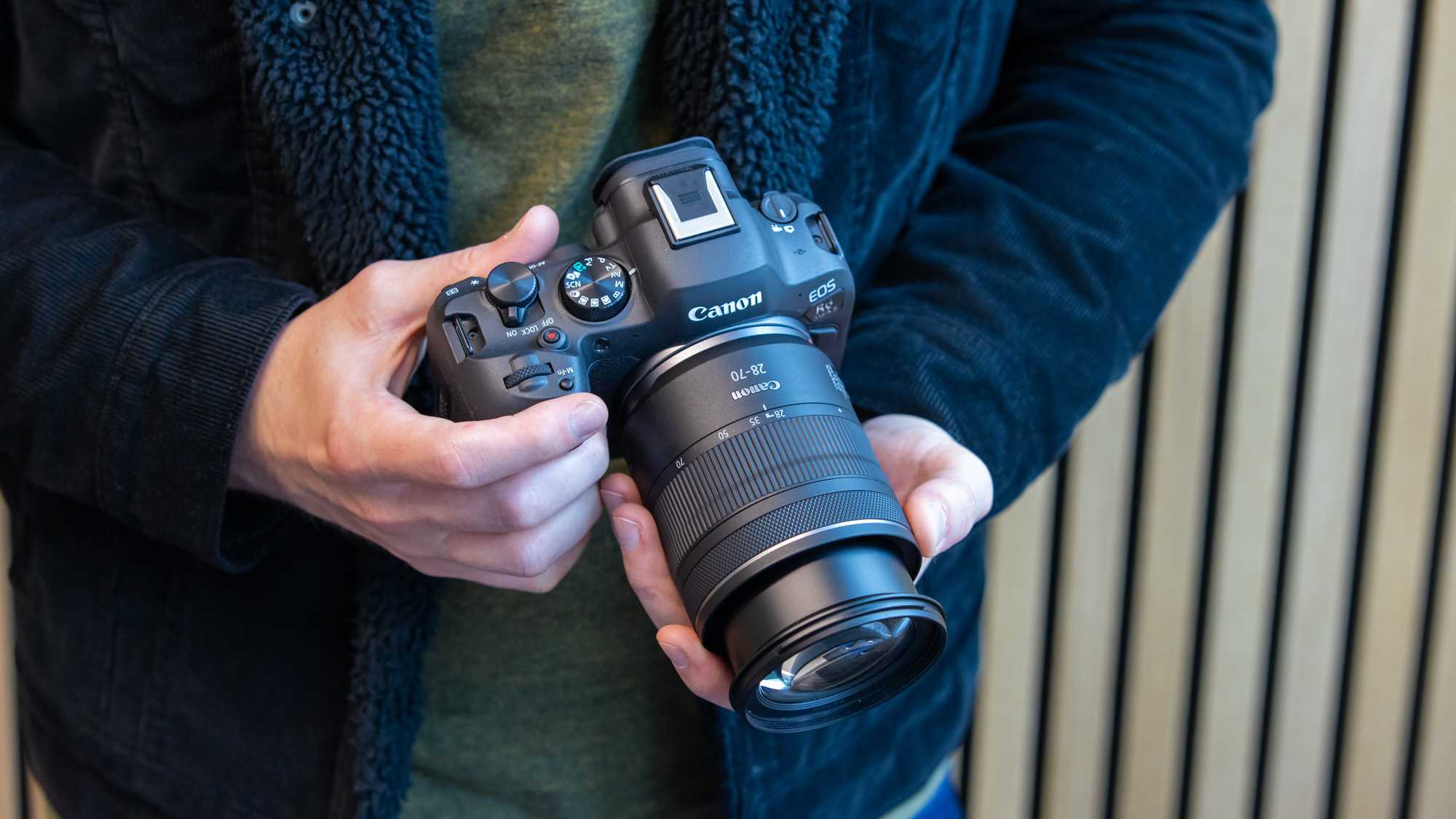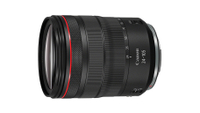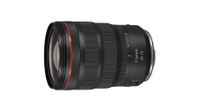Early Verdict
With the ongoing cost of living crisis, people are still struggling financially. The Canon RF 28-70mm f/2.8 IS STM is a very welcome addition to the RF family, giving users another affordable option. It's sharp and clean from chromatic aberration, though my RAWs showed signs of barrel and pincushion distortion and there was some vignetting at f/2.8 – though these were all easily fixed in post-production. It's a solid and compact option with decent stabilization, though users will have to weigh up this lens against the bigger RF 24-105mm f/4L – an L-series lens that isn't too much more expensive.
Pros
- +
Compact and portable
- +
Very well priced
- +
Constant f/2.8 max aperture
- +
Weather-sealed
Cons
- -
RAW files reveal distortion
- -
Only one focus/control ring
- -
Lens hood is an extra $35!
Why you can trust Digital Camera World
The Canon RF 28-70mm f/2.8 IS STM is a hugely welcome addition to the RF lineup. Full-frame R system users have been treated to some fantastic kit lenses in recent years, such as the highly compact and portable RF 24-50mm f/4.5-6.3 IS STM and the RF 24-105mm f/4-7.1 IS STM.
While these are relatively cheap and cheerful (all things considered), costing around $500 in the US, up until now if you wanted an upgrade to your kit lens the best option might have been the RF 24-105mm f/4L IS USM that costs considerably more at $1,299. Or, if you have the money for it, you could splash out on the Canon RF 24-70mm f/2.8 IS USM trinity lens at $2,399.
This is where the new Canon RF 28-70mm f/2.8 IS STM comes in. This compact zoom lens is about the size of a soda can, packs in a flexible zoom range of 28-70mm, a wide and constant maximum aperture of f/2.8, and borrows L-series features like weather sealing, too! I recently got hold of one to see just how far above its weight Canon’s souped-up kit lens can punch.
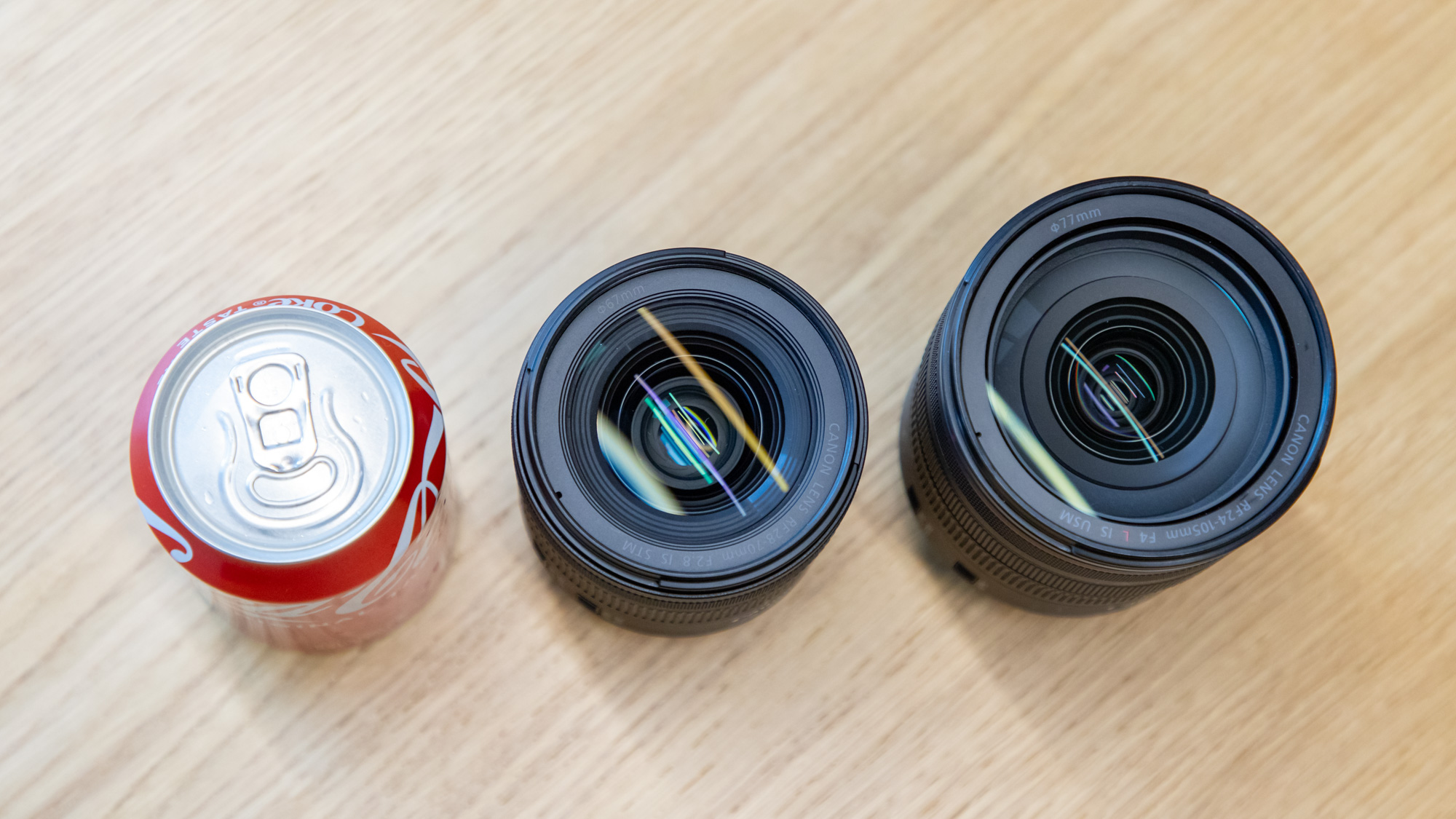
Canon RF 28-70mm f/2.8 IS STM: Specifications
| Mount | Canon RF |
| Aperture range | f/2.8 - f/22 |
| Autofocus | Yes |
| Image stabilization | 5.5 stops, up to 7.5-stops with IBIS |
| Magnification | x 0.24 |
| Close focus distance | 0.27 m (at 28mm) |
| Lens construction | 15 elements / 12 groups with 2 UD + 2 GMo Aspheric elements |
| Coatings | Super Spectra |
| Aperture blades | 9 |
| Filter | 67mm |
| Size (DxL) | 76.5 x 92.2mm |
| Weight | 490g |
Canon RF 28-70mm f/2.8 IS STM: Design & Handling
With dimensions of just 76.5 x 92.2mm, the Canon RF 28-70mm f/2.8 IS STM is impressively small with a similar footprint to a 330ml drinks can – as you can see in the image below.
It’s also very light, tipping the scales at just under half a kilogram. Compared to the RF 24-105mm f/4L it's about 14% smaller in length when fully retracted, and it's about 30% lighter as well – impressive!
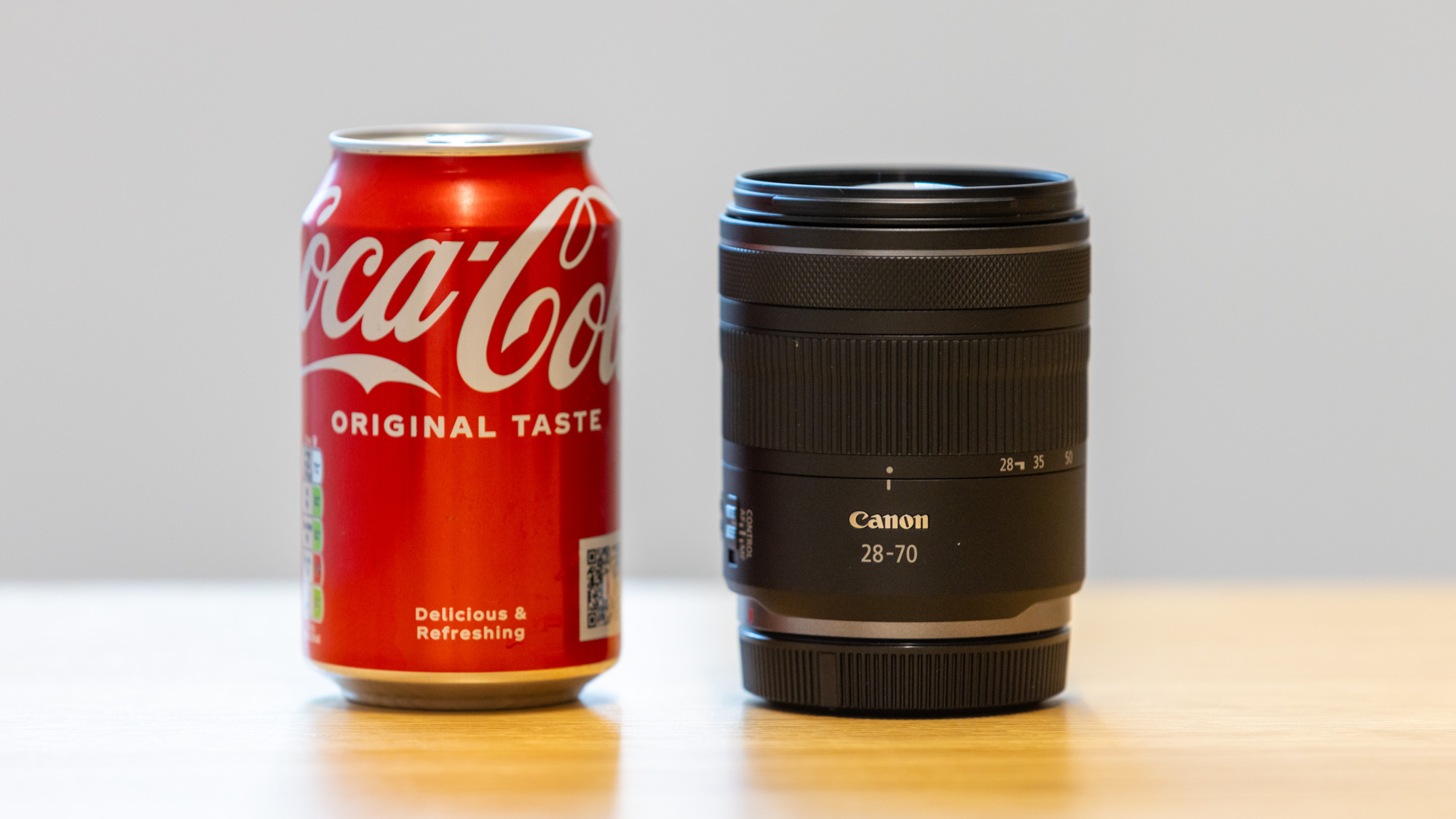
Packing so much into such a small lens there has to be a compromise or two. And in the case of the Canon RF 28-70mm f/2.8 IS STM the usual three lens rings – one for zoom, one for focus and one for control functions – have been consolidated down to two: a zoom ring and a multi-function ring, which can be toggled between AF / MF / Control via a switch on the lens barrel.
Another concession is that the zoom ring has to be twisted to the 28mm mark before you can start using the lens, as doing so 'pops' the front barrel out by about an inch to enter shooting mode.
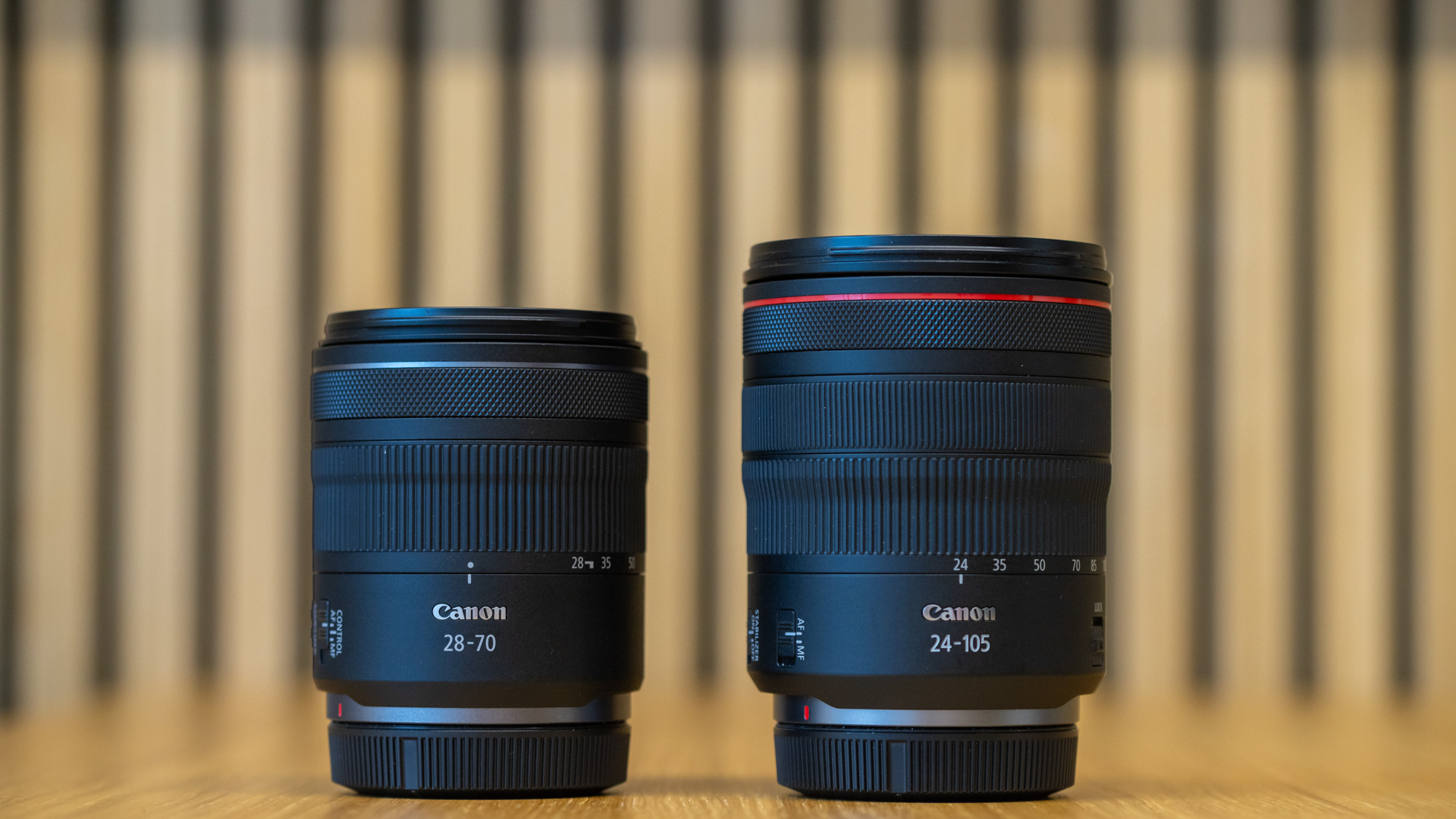
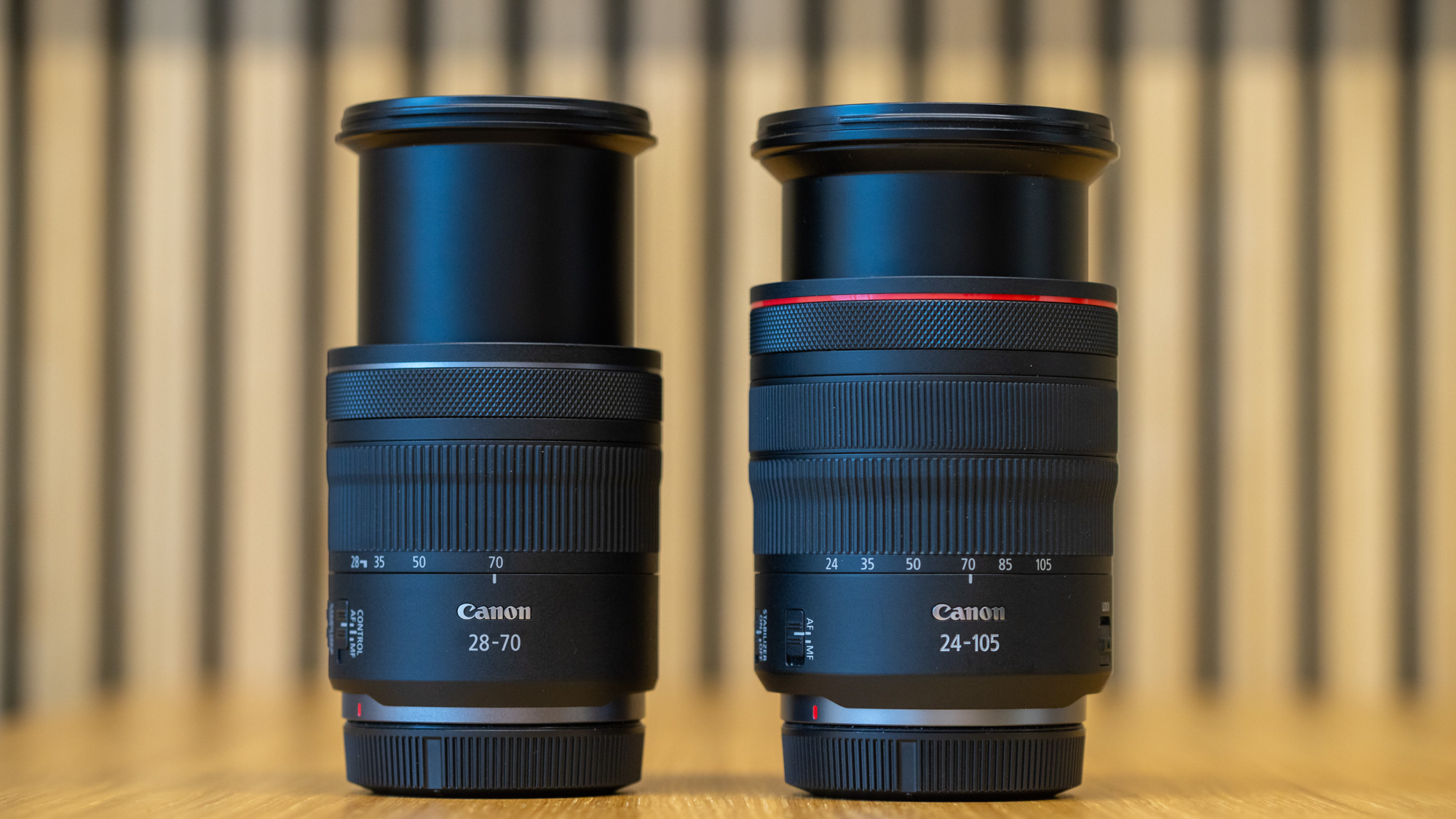
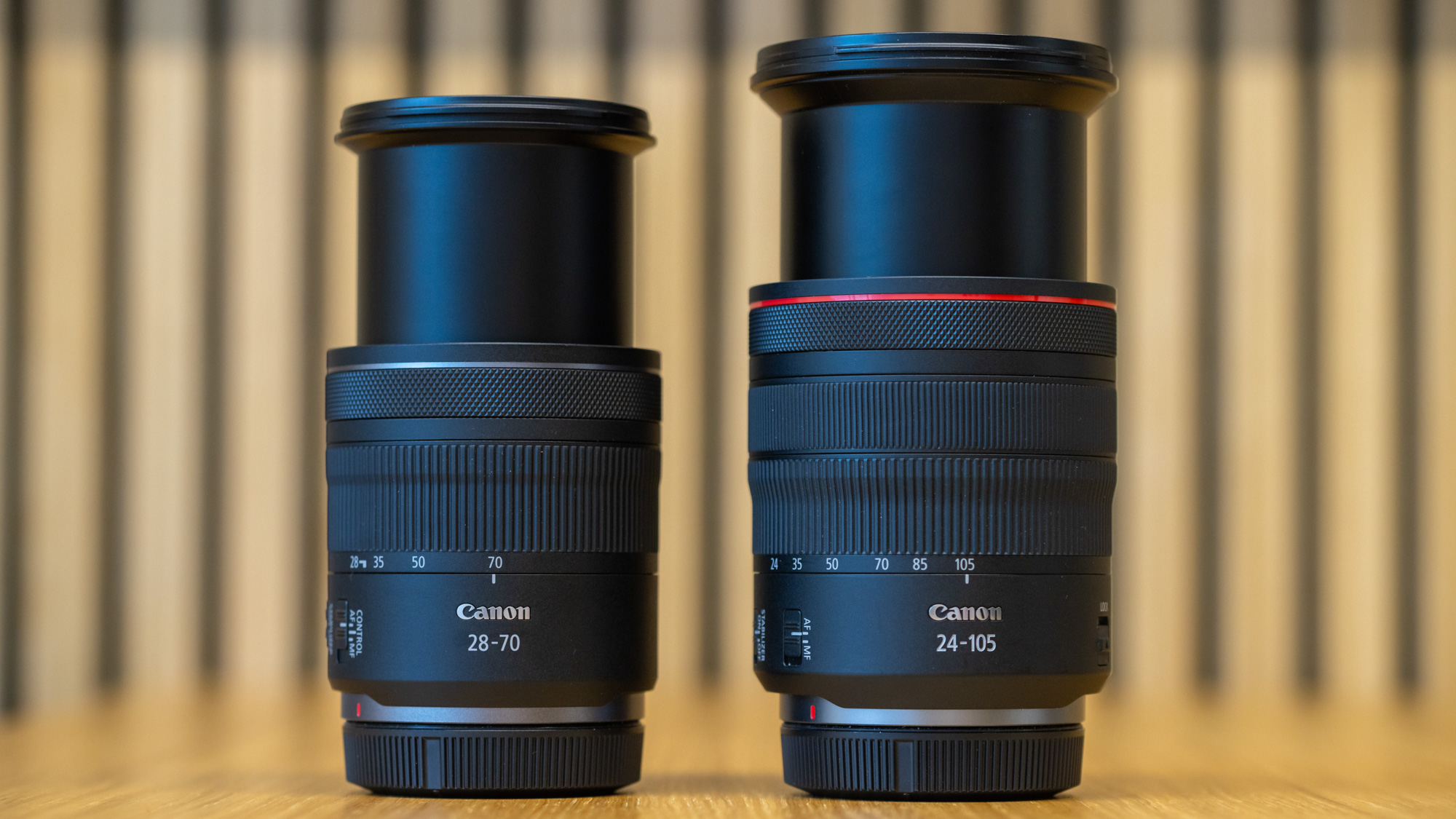
This means it's really compact when stowed away, but extends when the lens is in use. In fact, when fully extended to 70mm, it has a length of 138mm, which is very similar to the length of the 24-105mm f/4L at 70mm.
Also, as a non L-series lens, its image quality inevitably won't be up to par with optics that do wear Canon’s coveted red ring – though I’ll assess image quality more thoroughly in a moment.
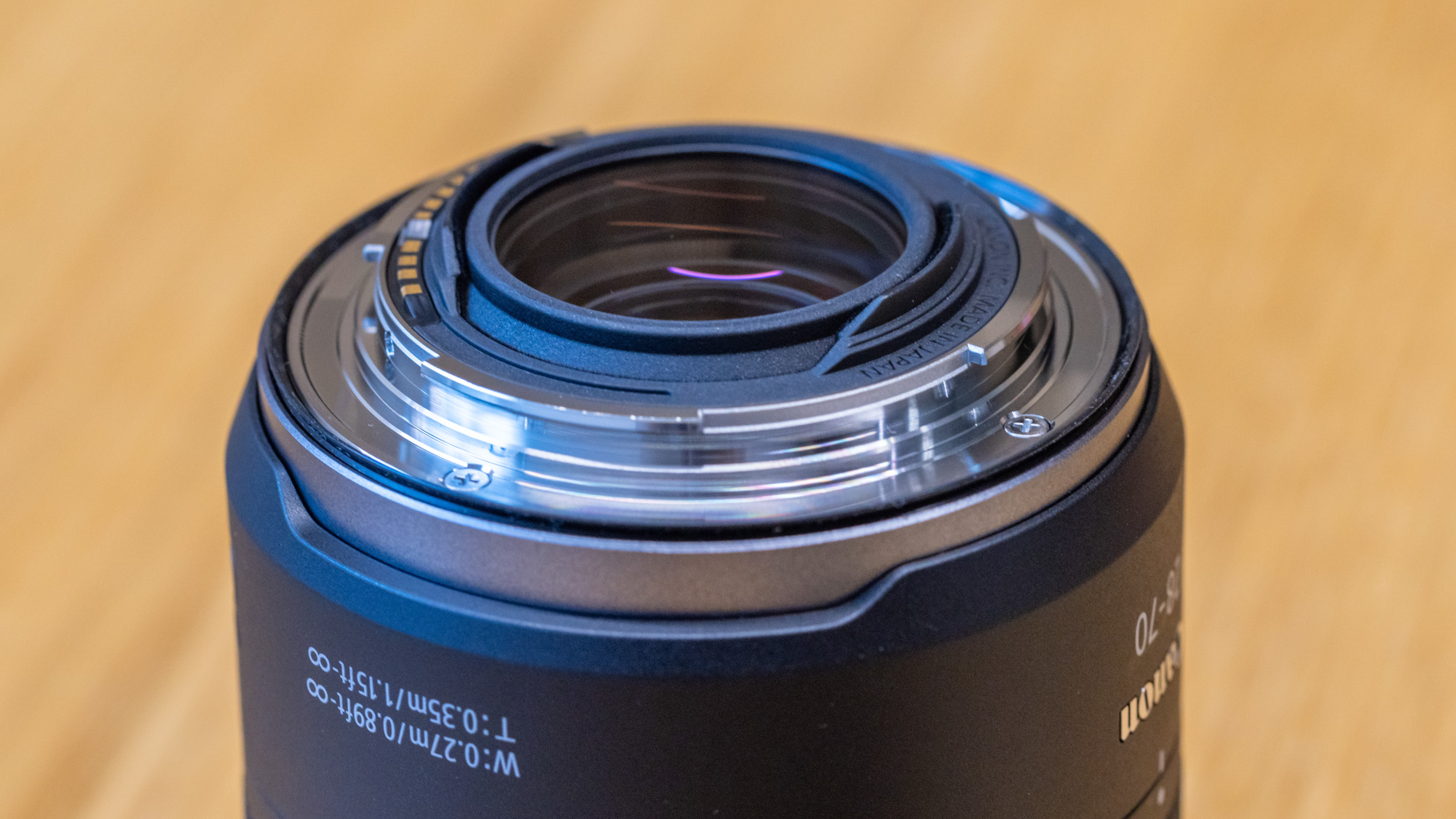
One great feature that it does borrow from L-series glass is weather sealing – which isn’t something you usually see on Canon lenses without a red ring, though it’s a very welcome addition to see seals around the focus and zoom rings, the mount and the lens switches to keep dust and water out.
Unfortunately, unlike L-series lenses that come with a lens hood in the box, the EW-73D hood for the 28-70mm f/2.8 is sold separately at a pricey $35 / £48!
Other noteworthy features include a 67mm front filter thread and closest focusing distance of 27cm at its widest focal length of 28mm.
Canon RF 28-70mm f/2.8 IS STM: Performance
I had a brief couple of hours to test a production sample of the Canon RF 28-70mm f/2.8 IS STM at Canon HQ in the UK, so stay tuned for the full review with more detailed analysis and full lab tests coming soon.
However, my preliminary findings were very positive. I found the autofocus to be very snappy and quiet, as you’d expect from an STM (stepping) motor, which makes this lens a good choice for photographers and videographers, or hybrid shooters that like to mix it up.

Having to twist the zoom ring to the 28mm mark before you can start shooting can be a bit frustrating – but at least there’s no lock button you have to press before twisting, which would get in the way and slow things down.
We’ve seen this design in other optics for many years now, notably on smaller lenses for APS-C and Micro Four Thirds cameras, but it’s a bit of a headturner to see this design used for a full-frame Canon lens. Though for portability reasons, it totally makes sense.
The Canon RF 28-70mm f/2.8 IS STM promises lens stabilization of up to 5.5 stops, or up to 7.5 stops (7 in the corners, per new CIPA ratings) when mounted to an EOS R body with image stabilization.


I didn’t get a chance to thoroughly test the IS during my short hands-on period with the lens, but images I took handheld all looked nice and sharp – though I’d have liked to have slowed my shutter speed more to really put it through its paces.
I shot RAW with my EOS R6 Mark II and EOS R5 cameras and was overall impressed with the image quality. There was some vignetting when shooting wide open at f/2.8, though it was easy to fix in the post production. I imagine this would be fixed for in-camera JPEGs, which is what I found when shooting with the Canon 10-20mm f/4L IS STM.


Comparing the RAW files between the 28-70mm f/2.8 and the 24-105mm f/4L showed that the new lens had much more barrel distortion at its wide end and pincushioning at the long end, whereas there was virtually none in the L lens – its horizontal and vertical lines remained practically straight.
I also saw vignetting in the 28-70mm when shooting wide open, and this didn’t clear up until the aperture was closed down to about f/5.6. Is it optically perfect? No, but then I wouldn’t expect it to be – and with in-camera adjustments and lens correction presets in RAW editing, it’s not a huge deal.


What can be said for the image quality of the Canon RF 28-70mm f/2.8 is that it is nice and sharp across the frame, and this gets even better when closing the aperture to a middle value like f/5.6. I also saw virtually no signs of chromatic aberration (fringing).
In summary, the image quality doesn't really concern me. It follows Canon’s growing trend of sacrificing the optical quality by fixing it in post-production and therefore enabling the lens to be made smaller and lighter. We saw the same thing with Canon’s RF 10-20mm f/4L IS STM, which also relied on post-production to polish up its images, and that is regarded as one of the best wide-angle L lenses you can buy.
Canon RF 28-70mm f/2.8 IS STM: Verdict
With the ongoing cost of living crisis, people are still struggling financially. So the Canon RF 28-70mm f/2.8 IS STM is a very welcome addition to the RF family, expanding the range to 52 lenses (including teleconverters) and giving users another more affordable option for kit lens upgrades.
The Canon RF 28-70mm f/2.8 IS STM costs $1,099 / £1,249.99 / AU$1,919, and while it shares the same aperture and a similar focal length to the RF 24-70mm f2.8L, the standard trinity costs twice as much at £2,519.
Its closest comparison is actually from the RF 24-105mm f/4L, which costs £1,389. So users will have to weight up whether they want the extra portability and wider aperture of this new lens, or go for a bigger and heavier optic with a slower aperture – but one that comes with a red ring, and delivers sharper images with less distortion.
There's no right or wrong answers here, it will just be down to which suits you best – though if you're on a super strict budget, the 10% difference in price might sway you.
Should you buy the Canon RF 28-70mm F2.8 IS STM?
✅ Buy it...
- If you're looking for versatile kit lens that can do it all
- If you need a super wide maximum f/2.8 aperture for low light or astro work
🚫 Don't buy it...
- If you want the very best quality you'll be better with an L lens
- You don't don't want to wrestle with one lens ring doing the job of three
Alternatives
Canon RF 24-105mm f/4 L IS USM – This lens is relatively compact and lightweight, offers impressive sharpness, has image stabilization and is weather sealed – in all, a great complement to any EOS R camera.
Canon RF 24-70mm f/2.8L IS USM – Canon’s most important RF mount trinity lens is here to prosthelytize the benefits of the EOS R system – it’s sharp, it’s stabilized and it even suppresses focus breathing, but it's also a way more expensive proposition.

Deputy Editor on PhotoPlus: The Canon Magazine, Dan also brings his technical wizardry and editing skills to Digital Camera World. He has been writing about all aspects of photography for over 10 years, having previously served as technical writer and technical editor for Practical Photography magazine, as well as Photoshop editor on Digital Photo.
Dan is an Adobe-certified Photoshop guru, making him officially a beast at post-processing – so he’s the perfect person to share tips and tricks both in-camera and in post. Able to shoot all genres, Dan provides news, techniques and tutorials on everything from portraits and landscapes to macro and wildlife, helping photographers get the most out of their cameras, lenses, filters, lighting, tripods, and, of course, editing software.
